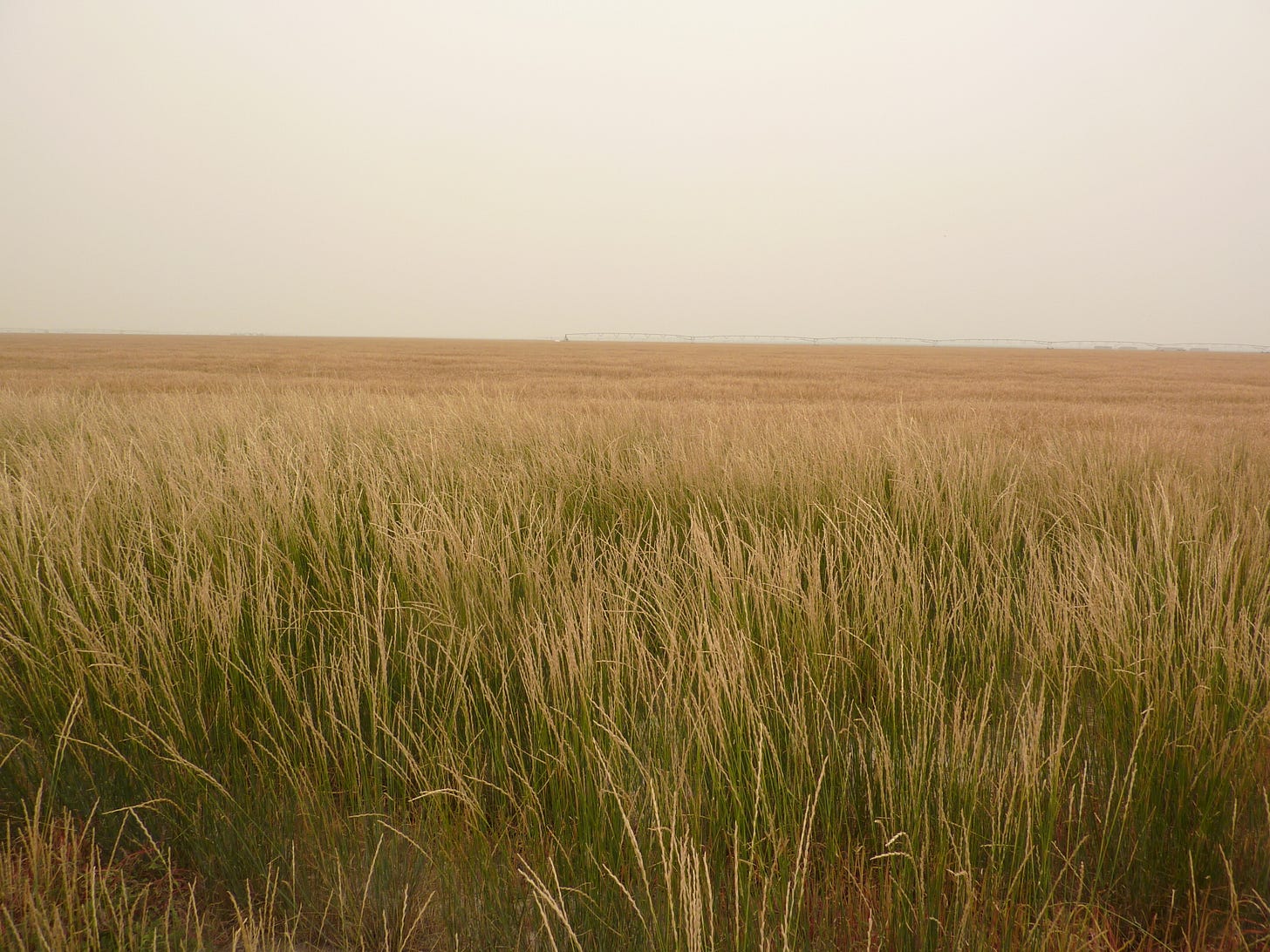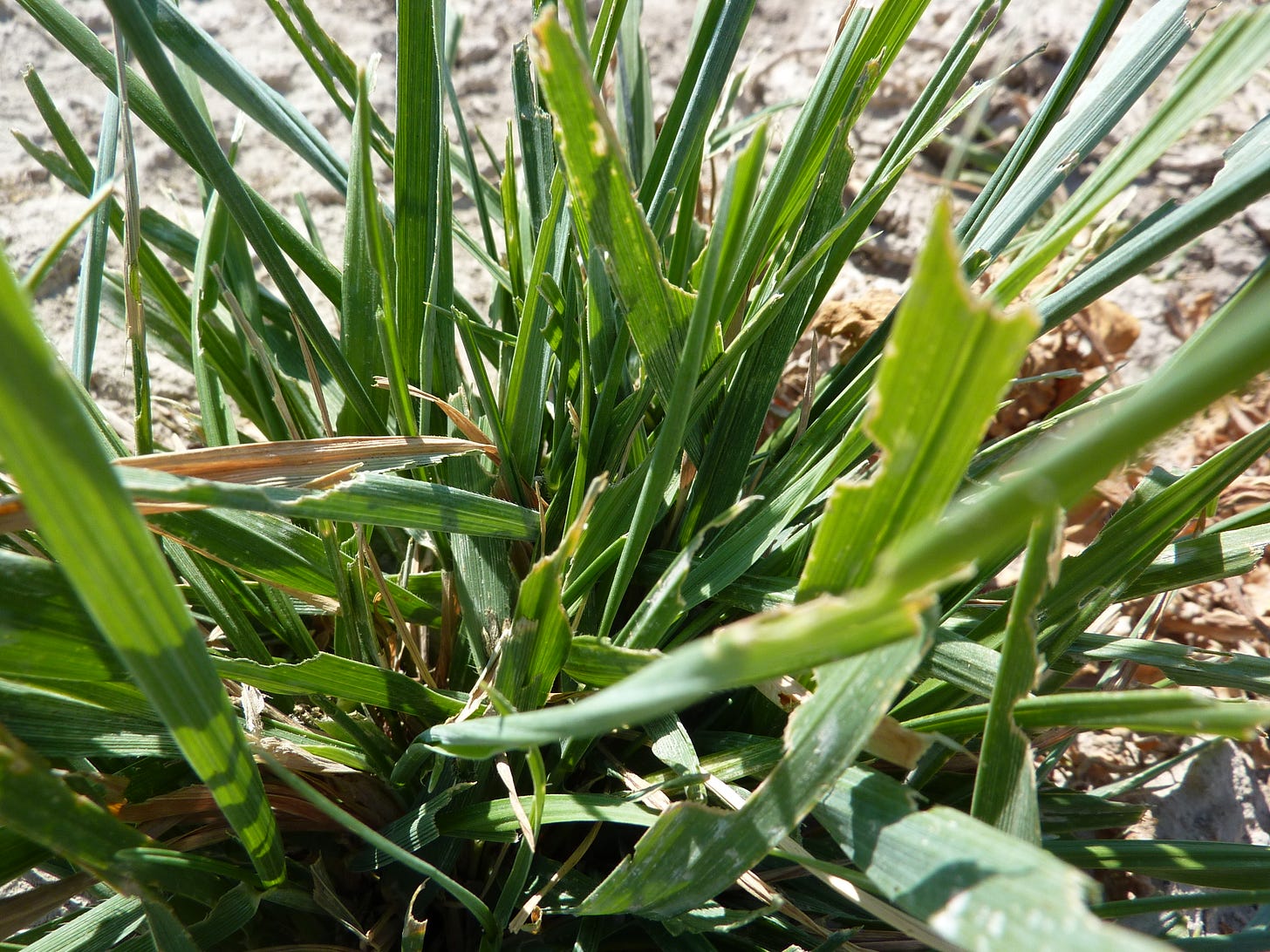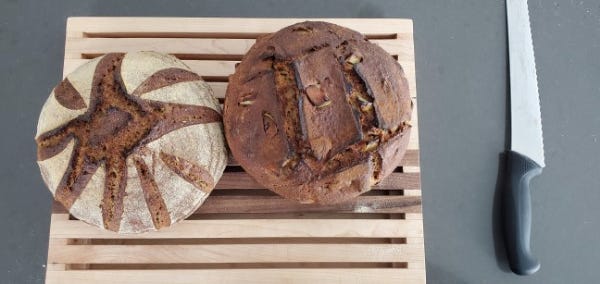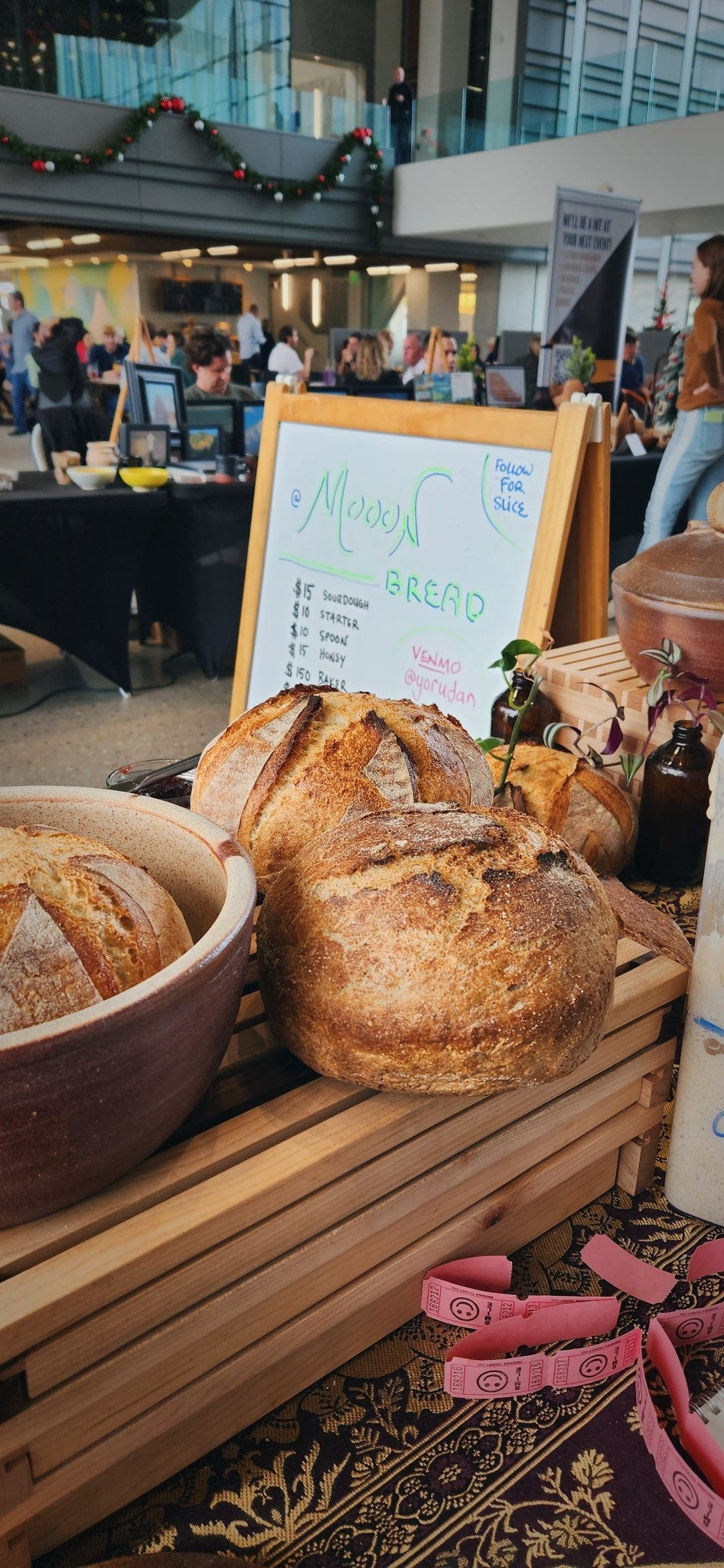Kernza® Part II: Interview with the Farmer
Sam Holdaway believes in the promise of this perennial grain
Welcome back, both bread bakers and bread consumers alike. If you haven’t yet read Part I, please do yourself a favour and get familiar with Kernza there first:
In preparation for that edition I reached back out to Sam Holdaway to get an update on his Kernza farming journey. Our conversation quickly evolved into the interview you see below. When I was experimenting with some Kernza bakes he was unable to taste the creations, so that’s where we started:
Has your sense of taste returned? I'm guessing not to full strength.
Sam Holdaway: The answer to that is, not really. I can taste some food items while other food items still taste like metallic garbage. My sense of smell is still not very good either. It will be three years on January 9, 2024 from when I lost both taste and smell due to COVID-19.
Remind me what drew you to Kernza in the first place? How did you come across it?
Sam: Well, let me answer the second part of the question, first. I came across Kernza while at the annual Northern Nut Growers of America meeting. Lee DeHaan was the presenter in the conference, speaking about perennial grains. I went up to Lee afterwards and we talked some about the project.
The first part of your question is lengthier to answer. My background is in agriculture and I come from a long genealogical line of farmers on both sides of the family.

I believe that we are only as free in this country as we are able to be self-sufficent. When we stop being able to produce our own food, then our freedom is truly gone. I believe that we have answers to problems of food securities currently in the U.S.A, but they are not utilized and should be.
In short, agriculture is important to me and it is in my blood.
What are the most promising applications you've seen? Are there two or three things that get you really excited?
Sam: I would say primarily the possibility of having a dual-purpose crop is very promising. Couple this concept with the fact that farmers do not have to plant seed every year, nor cultivate the ground annually makes this exciting in my opinion. In addition, the roots have the capacity to improve overall soil health and tilth which is also a plus in agriculture and soil reclamation.
I would say though, being able to cut a grain crop and then graze the foliage afterwards is something exciting to me; a big positive. I was very interested in speaking with Lee right after his presentation because some of the parentage that Kernza has is a native to Utah and much of the Intermountain west. I believe there are possibilities here that could create a niche market for farmers here in the state of Utah.
The other thing that I believe is promising and I get excited about is the higher protein content in Kernza compared to wheat. There is a plus there that I think can develop healthier products on the market.
Do you expect that you will get back into full-time farming if your investment goes well?
Sam: Well, the short answer is, no. I love agriculture and I would return in a heartbeat if I thought it was the right path for me. I also believe that everyone has a calling or purpose in life. A path each person is meant to take. Mine is in my current employment. However, I do not let that stop me from working agriculture on the side and helping to strengthen agriculture and our country.
When you're looking to do a large project like this where do you normally turn to for investment funds? Is there a crowdfunding option these days?
Sam Holdaway: Where do I look for help, is in the farming community that I am a part of. This help comes in the form of land to rent, cheaper tractor work or other lower cost field work. As far as actual funding I go everywhere I can. I have tried to secure funding on the Federal level, the State level, the County level, and the community level. The very sad thing I ran into early on is Federal, State and County governments do no think this is a worthy project. Their reasons are different on each level and seem to change with time.
I have also tried to apply for various agricultural grants, but to date I have not secured any and the competition is fierce in this regard because other government agencies or programs mostly turn down agricultural applications. Hence, this makes the options narrowed. At this point I am turning my focus to crowd funding or finding like-minded focus who can agree to support this project. To date everything I have done I have funded out of my pocket and with the generosity of farmers I know. I am starting to look for funding to purchase 40 acres to grow Kernza on a larger scale experiment location. This will depend on funding and land location.

You mentioned processing a small grain is the hardest thing right now that you're working to overcome. What paths do you have that you're exploring?
Sam: This is a problem. There are a couple things that can help.
Kernza breeders are trying to breed plants that will grow larger kernels of grain as well as kernels that are more naked also known as a seed free of a seed hull. Seed hulls are commonly called grain chaff. One of the local grain elevators is willing to make screens to clean help clean the seed if there is a market for the seed and if breeders can develop a more naked seed or free threshing seed. So, if a reputable market is established and a more naked seed is developed then some possibilities lie there. I have contacted three grain elevators or grain mills with the only one currently working with me having any interest in the project. As agriculture goes away so do agriculture companies which means few resources or opportunities to do work with them. They are all looking for established business. Because they are more of a guarantee for money to be made.
The USDA has a small grain cleaning operation they have in one of their test plot locations, but to get this operation built-up to a needed size where more grain can be cleaned on a consistent basis would also need a significant investment in capital. This is still an ongoing problem.
As agriculture goes away so do agriculture companies which means few resources or opportunities to do work with them.
Are livestock grazing periodically on your current Kernza plot?
Sam: Yes, there are sheep brought in from another farm to graze the Kernza plot that is in place now. So far, the Kernza plants have handled this well and in fact is the best-looking forage of any native or agricultural plant in the spring that breaks dormancy.
Our first year with the Kernza plot had innumerable amounts of grasshoppers. The area in that part of the county was declared a spot of infestation that first year of our plot. Even with that we were still able to harvest a good yield of health grain seeds. So, the answer to how Kernza handles stress from grazing or stress of insect damage is remarkable.

I believe that we are only as free in this country as we are able to be self-sufficent. When we stop being able to produce our own food, then our freedom is truly gone. I believe that we have answers to problems of food securities currently in the U.S.A, but they are not utilized and should be.
Any other grains that get you excited?
Sam: To date, really no. Because I see so much possibility with Kernza there is no other grain that gets me as excited as Kernza does. Utah and Idaho really have so much to offer in terms of growing Kernza and having a niche market.
Your readers can find more projects of perennial grain here: Perennial Grain Crop Development | The Land Institute

What’s next?
Jordan: Dear readers, I’d encourage you to try out Kernza-based products as you see them on the shelves, and seek out some flour to bake with. Also keep an eye out for other perennial grains. Let me know how it tastes.
Thanks to Sam Holdaway for sharing the Kernza flour and berries with me and allowing me to experiment with recipes for him and the USDA. Also thanks to Sam for taking the time to do this interview. I’m keen to see his Kernza plot thrive and expand in northern Utah.
If you are interested in supporting Sam in the future as he looks to get the 40 acres of land dedicated to Kernza, please reply to this note with your contact info and interest and I'll pass it along to him.
December Announcements:
Thur, Dec 7 → Mooon Bread exhibiting at the Adobe holiday market (Adobe employees only). Fresh sourdough, starter, wares, desserts, and a couple surprise boules for sampling.
Sat, Dec 9 @ 9am → Mooon Bread Sourdough Workshop in Draper, UT. Reply to this email to get registered and come gets your hands in the dough.
Tue, Dec 26 @ 9am → Mooon Bread Sourdough Workshop in Draper, UT. Reply to this email to get registered and come gets your hands in the dough.
Gift Card Couple’s Workshop Package → I’m extending the couples package I offered at Suncrest Markets and at the Utah Cheese Awards this year.
Instead of the regular $154 per person for the full in-person workshop, which would be $308 for a couple, you can save $109 by purchasing a hand-written gift card for two people for $199.
This will be good for any of the in-person workshops in 2024 (typically two per month).
Reply to this message or email mooonbread@gmail.com by Dec. 20, 2023 to lock this deal in.




